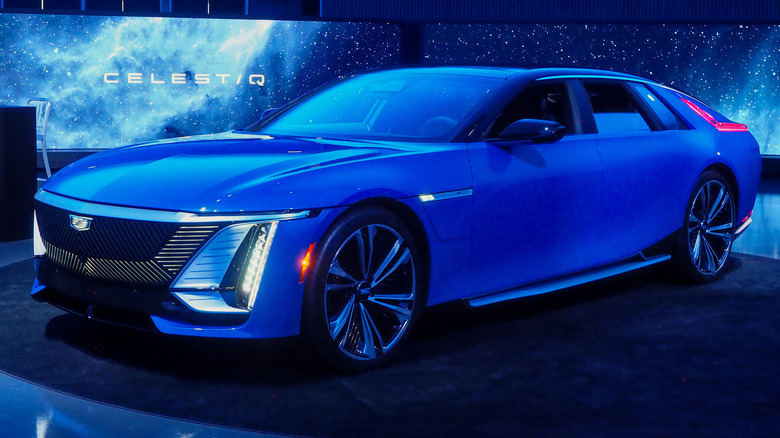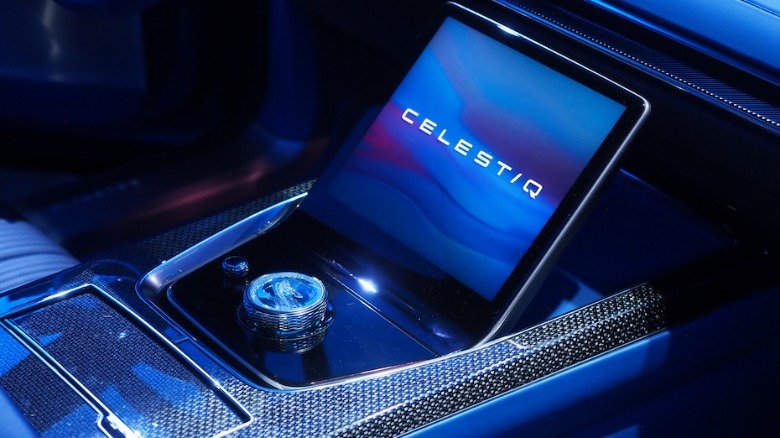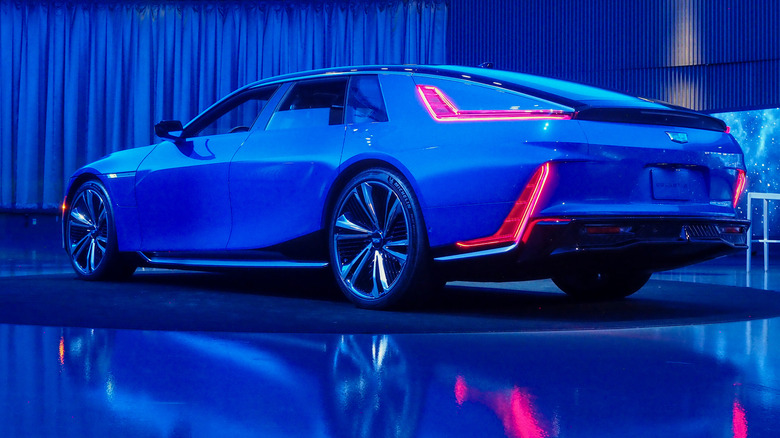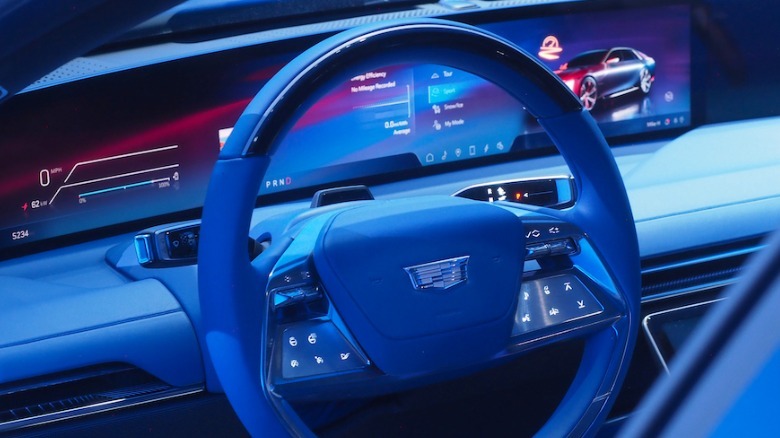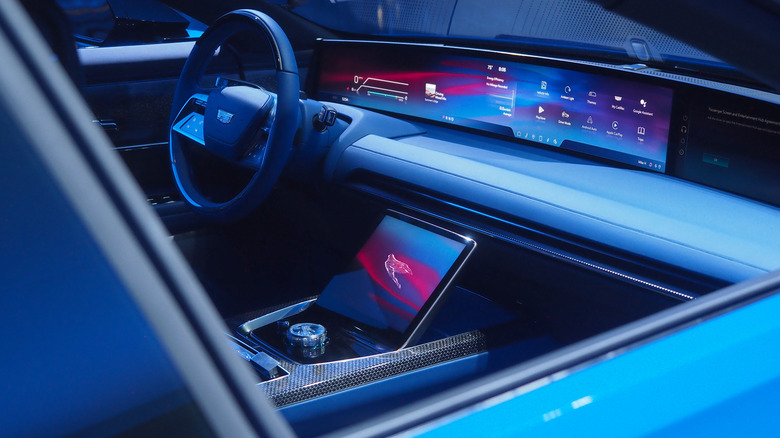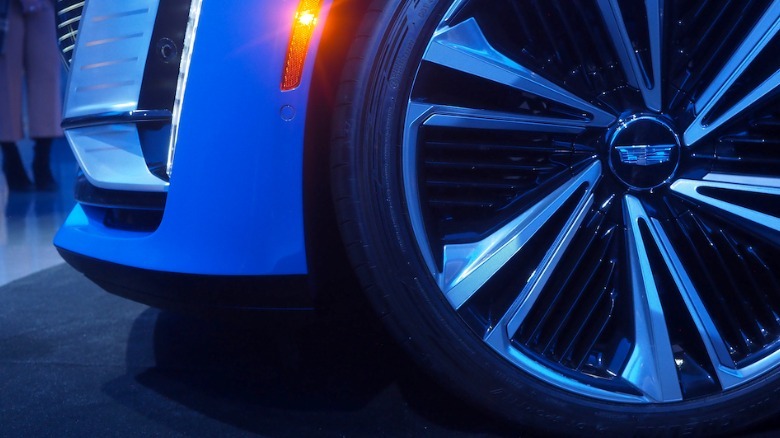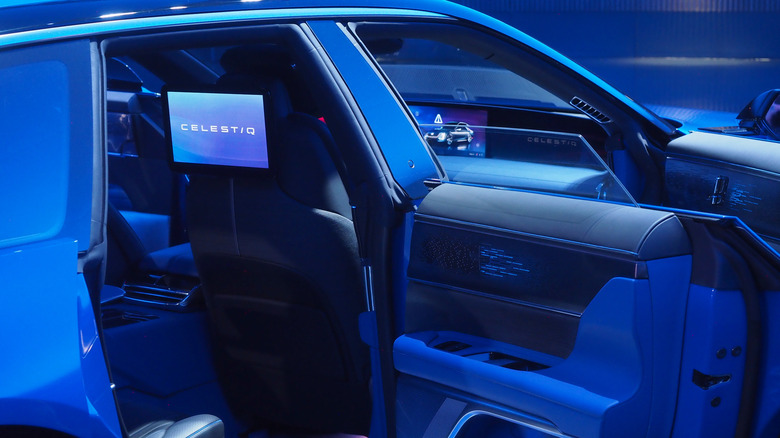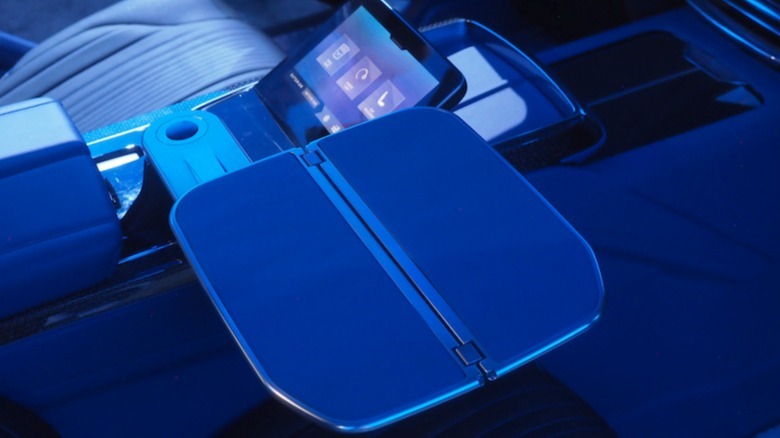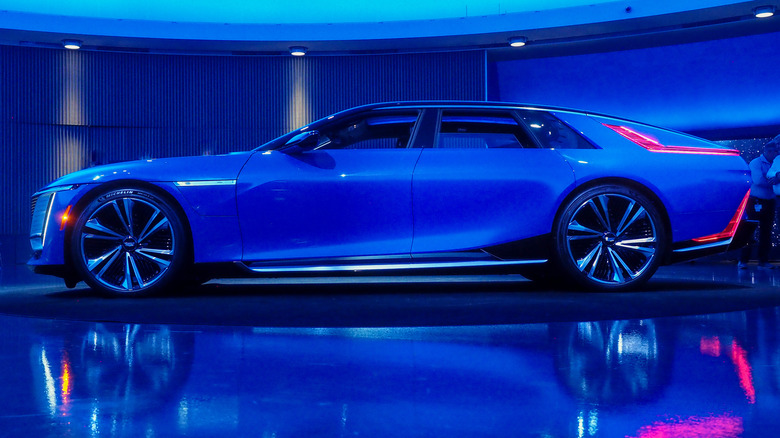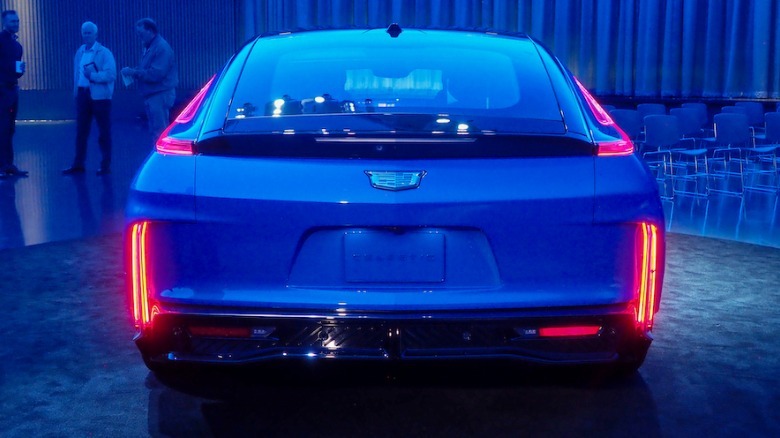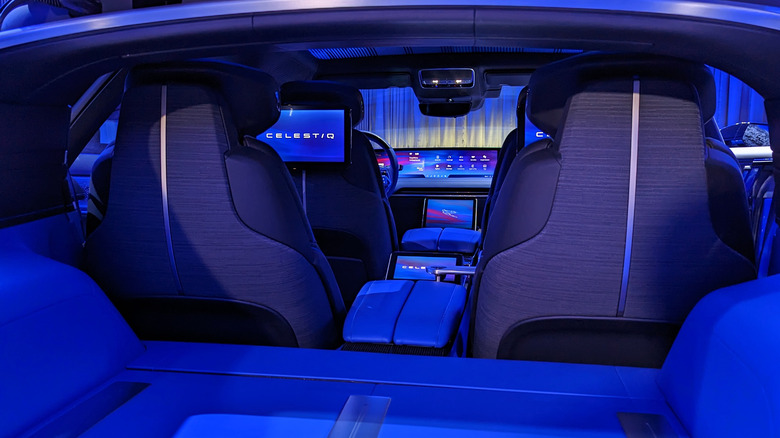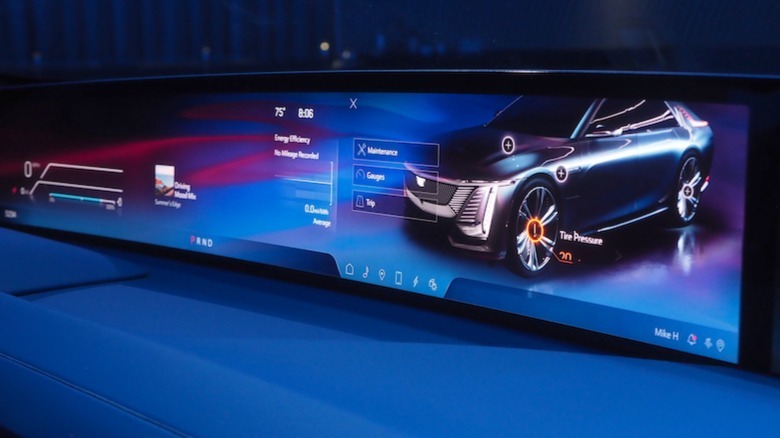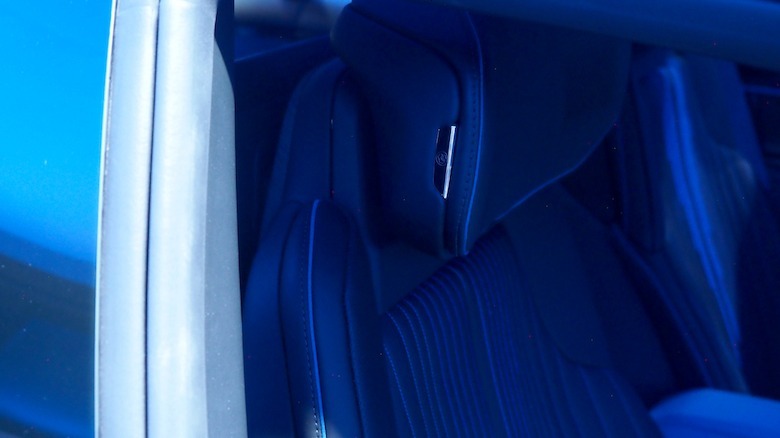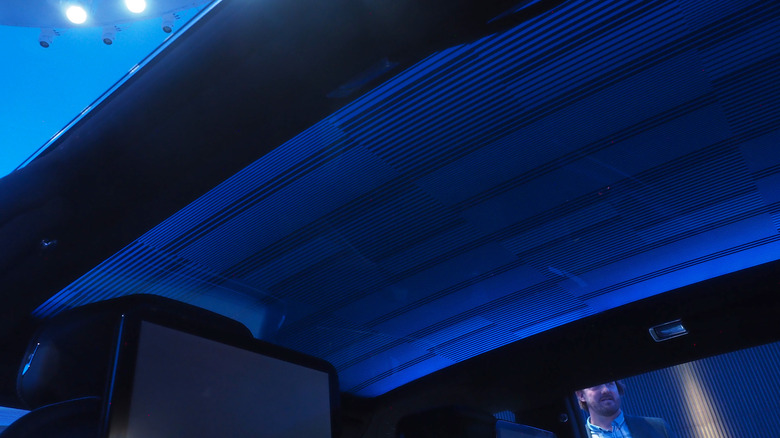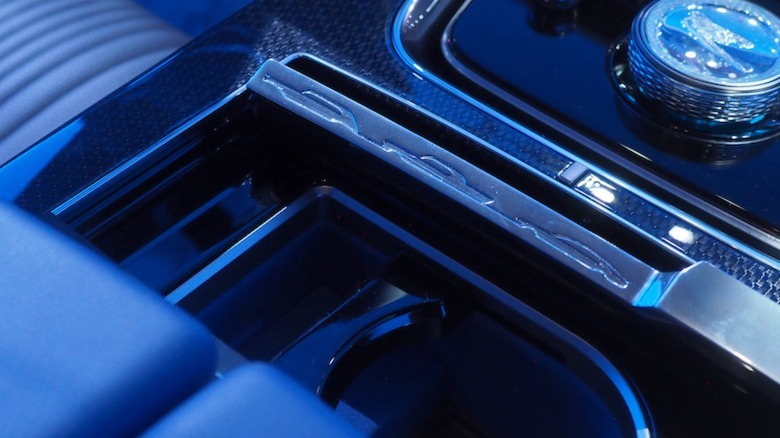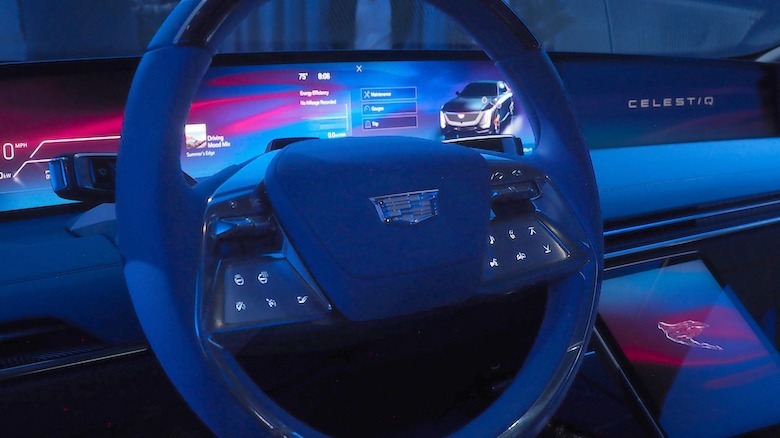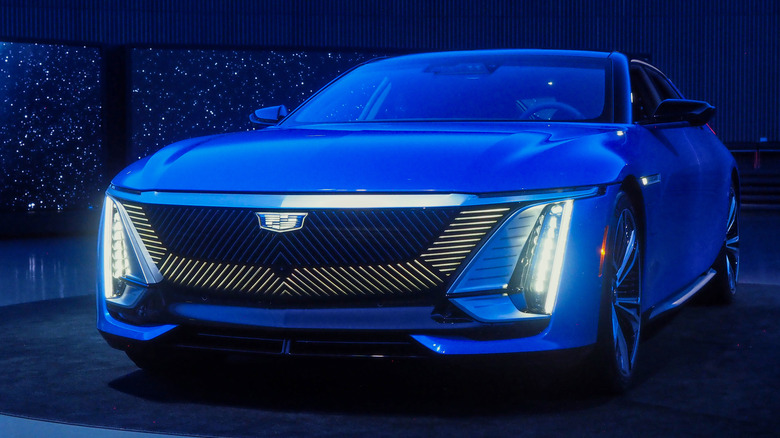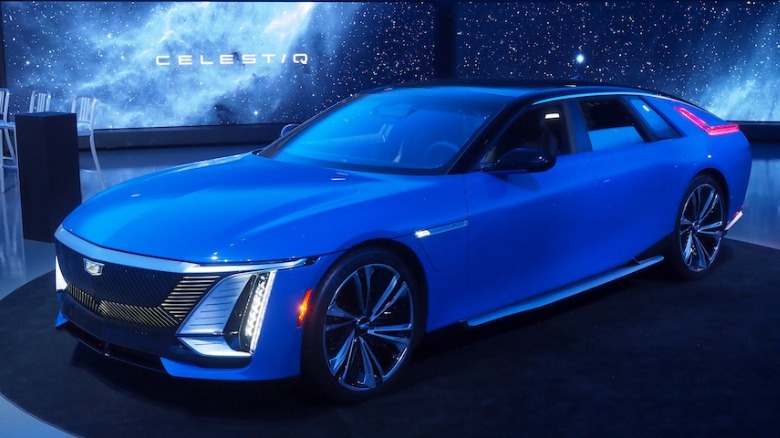Cadillac Celestiq First Look: A Super-Luxury $300k Electric Car Built Just For You
The Cadillac Celestiq has been a long time coming. Not just a nod back to, but a wholesale reclaiming of the automaker's coachbuilding talents, it's the pinnacle of profligacy from a car-maker that has been accused of forgetting the reality of true luxury in recent years. Because, while leather, wood, and gadgets may wow by themselves, nothing quite beats exclusivity.
Cadillac, like just about every automaker, has flirted with limited editions before now, but the Celestiq — pronounced, incidentally, "Celestick" so as to rhyme with Lyriq — elevates that to new levels. "It's handcrafted, it's built here in our technical center in Warren, Michigan," Rory Harvey, Vice President of Global Cadillac, says of the astonishingly long fastback sedan. Each will be one-of-one.
Each will also be — not only in Cadillac terms but car terms more generally — fabulously expensive. Celestiq ownership, if you're approved to purchase one, will start in the low $300,000's, according to the automaker. That, though, is for a "blank canvas" car, according to Harvey, and the price is expected to spiral accordingly as potential owners explore the possibilities.
The most epic Cadillac ever
Mass production has been responsible for a lot of things in transportation, not least bringing car ownership to a level where many can afford it, but the Celestiq takes the exact opposite approach. Cadillac will build fewer than two cars per day, and no more than six being produced at any one time, with total production for each vehicle from order to delivery expected to take months depending on just how much customization is involved.
It's that which Cadillac is hoping will catch on. The automaker would be mightily disappointed if you took home a Celistiq that looks just like this blue example, built to showcase the production version of the original concept. Not because it's disappointed with how it looks and feels, but because the whole point of the exercise is to make something nobody else has. Indeed, the Celestiq brief was to "develop the most epic Cadillac ever," according to Brandon Vivian, executive chief engineer at the automaker.
Ultium meets 3D printing
That has involved combining craftspeople with cutting-edge manufacturing processes, and General Motors' Ultium electric platform underneath. Celestiq is a full EV, with an estimated 600 horsepower, 640 lb-ft of torque, and — despite its vast dimensions, almost as long as an Escalade SUV — capable of 0-60 mph in an estimated 3.8 seconds.
They're wild numbers, but not as wild as how complex each car will be to build. 115 of the parts use additive manufacturing, or 3D printing, the broadest application in GM so far. The steering wheel, for instance, is entirely 3D printed, and the biggest such metal piece put into production so far. The window switches, grab handles, and other structural pieces are also made in the same way.
Mega castings, meanwhile, allow for six vast cast aluminum components for the underbid and the shock towers. Then there's Flex Fabrication — a sheet-folding process that Cadillac describes as "akin to metallic origami" — with more than 300 such pieces through the EV.
Bespoke is the name of the Celestiq game
Cadillac has been extreme in avoiding plastic wherever it can, particularly in the interior. All of the metal is real metal; its finish and even its core design can be modified. There'll be a palette of paint options, but if you want to match your Celestiq to your favorite lipstick or your dog's eyes, Cadillac will do that too.
There'll be a design hub at GM's Warren center, with a craft center to showcase some possibilities, but the Cadillac team will be headed out on the road to meet with customers where they are, too. If owners want to come to watch their car being built from time to time, they can; or, they can track the progress via their dedicated concierge.
The limitations, really, come down to making sure the car still satisfies safety regulations. Beyond that, you get the sense that Cadillac is really hoping its customers rise to the challenge and test what's possible. "We'd love you to be extreme," Michael Simcoe, VP of Global Design, says.
600 horsepower and 300 miles of range
For its part, Cadillac hasn't left the Celestiq wanting when it comes to performance or platform. It's the same core Ultium architecture as we've seen used in the automaker's own Lyriq electric SUV — though Celestiq's design actually predates Lyriq — with a bespoke arrangement that repositions the battery cells so as to allow the whole car to be lower. The 5.51-meter-long car is expected to drive more than 300 miles on a charge of its 111 kWh battery, and it'll support 190 kW DC fast charging for adding around 78 miles of range in 10 minutes.
There's also Active Roll Control — a Cadillac-first — and adaptive air suspension, along with the latest iteration of Magnetic Ride Control 4.0. Active rear steering and 5-link front and rear suspension are standard, too, along with variable ratio front steering. Huge, 23-inch forged aluminum wheels and dual-motor all-wheel drive are also standard.
So, too, will be Ultra Cruise, GM's upcoming iteration on Super Cruise that — eventually — the company says will be able to do door-to-door hands-off semi-autonomous driving in 95% of all situations. The Celestiq will have all the hardware for Ultra Cruise installed, though the functionality will be rolled out as a series of over-the-air (OTA) software updates. Exactly what the EV will be able to do at launch is unclear, though the same feature set of Enhanced Super Cruise right now seems likely.
Lashings of tech in a customizable cabin
The rest of the Celestiq's tech is a whole lot more noticeable. There are 5 high-definition displays in the cabin, including a 55-inch pillar-to-pillar screen — in fact two panels under a single sheet of glass — spanning the whole dashboard. Front and rear command centers handle things like comfort and seat settings, along with opening and closing the power doors. Finally, there are two 12.6-inch rear displays for the twin back seats. Despite the scale, Celestiq is resolutely a four-seater experience.
The infotainment system is based on Google's software, with things like the Google Assistant, Maps, and Play store built in. There's also a 38-speaker AKG audio system with 1,000 watts and next-gen active noise cancellation, plus three exterior speakers for Cadillac's first exterior sound system. 7mm-thick acoustic laminated glass — with antennas cunningly embedded inside — make sure exterior noise is kept at a distance.
So, too, is an advanced HVAC system, with the Gentherm ClimateSense promising 33 unique microclimate devices for each occupant to tailor how their seat heats and cools. That includes neck scarf vents for the front and rear seats, plus heated armrests and pads, and motorized vents. Not only is the end result more precisely controlled, Cadillac says, but it's actually more efficient than a regular climate control system.
Sweating the details, big and small
Look up, and you see what Cadillac claims is the largest piece of automotive-grade glass in the world. The Celestiq's enormous panoramic roof is actually made of smart glass, with four separate quadrants that can individuals be adjusted from under 1% to 20% tint. It has infrared reflective and low-emissivity coatings, to help keep the cabin cool.
Impressively, certainly, but it's some of the detailing which stands out as being a little more charming, somehow. The trio of car silhouettes on the edge of the central console lid, for example, that puts the Celestiq in line with some of its bespoke forebears is a neat touch.
Despite the "one of one" pitch, meanwhile, Cadillac insists that Celestiq won't be entirely separate from the rest of its line-up; or, at least, that the techniques and processes involved won't be. The team working on the big EV is the same that delivered sedans like the CT6, CT5, and CT4, and will be exploring how elements in Celestiq can be brought to mass production. "We will carry this technology forward," Vivian promises.
Finally, a halo car Cadillac can aspire to
All the same, it seems fairly unlikely that any of us will encounter a Celestiq in the wild all that often. Cadillac isn't intentionally limiting production of the car, counting on its manufacturing capabilities and the general appetite for such an EV to do that instead, and nor will it control allocations for different regions around the world. Interest has already been significant, though, the automaker says, and production is expected to begin in December 2023.
It's not unreasonable to say that Cadillac has felt the pinch in recent years, between established luxury players and new upstarts in the category. While models like the CT5-V Blackwing have certainly not stinted on performance, just whether they've also managed to attain the true prestige of an authentic luxury vehicle is questionable.
Celestiq won't be to everyone's tastes, but it certainly leaves no room for doubting where Cadillac sees its priorities. "What all brands need is a halo, you need to have a North Star that defines a brand," Michael Simcoe, VP of Global Design, says. "In many ways now, Celestiq is Cadillac."
